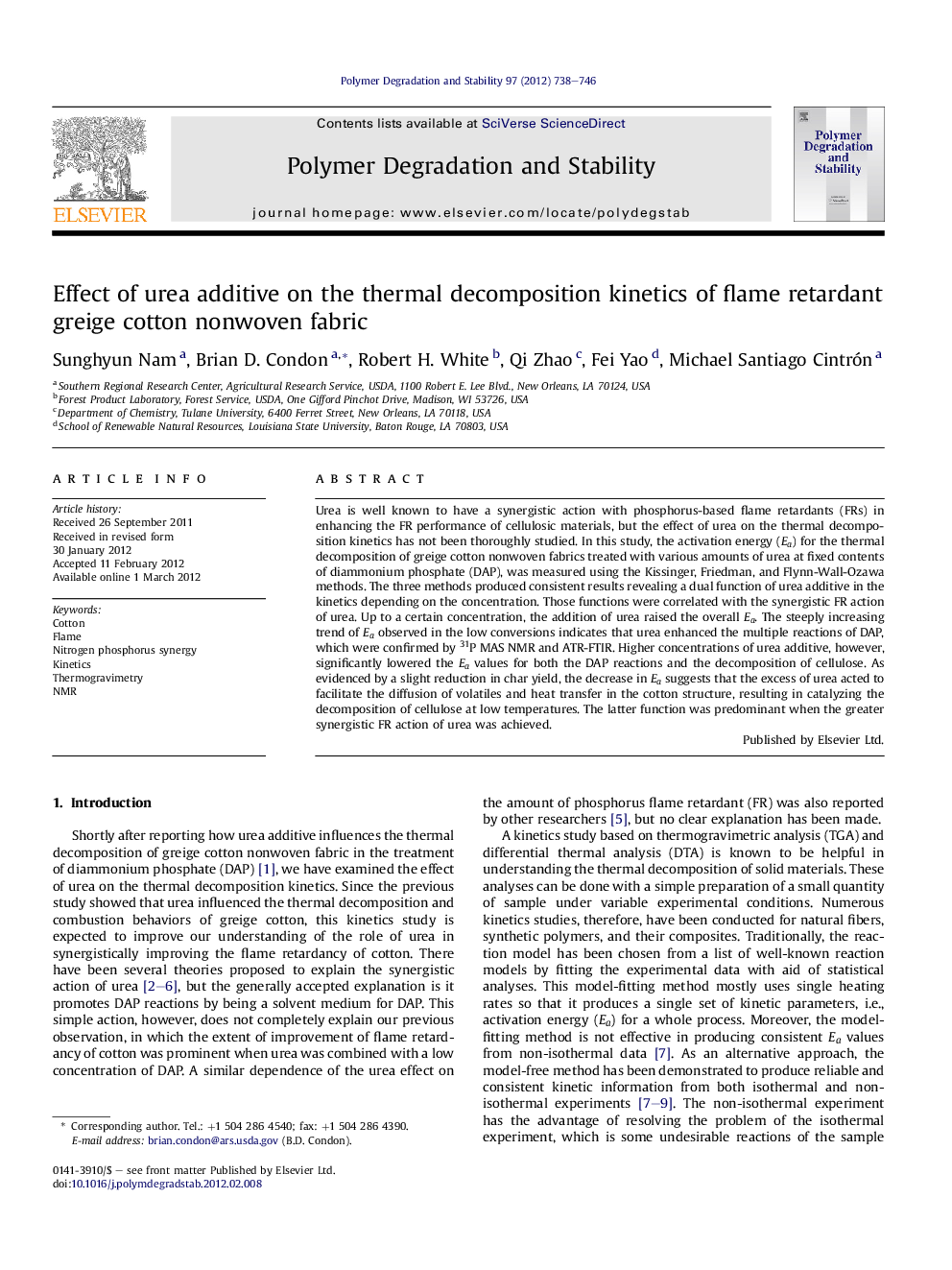| Article ID | Journal | Published Year | Pages | File Type |
|---|---|---|---|---|
| 5202491 | Polymer Degradation and Stability | 2012 | 9 Pages |
Urea is well known to have a synergistic action with phosphorus-based flame retardants (FRs) in enhancing the FR performance of cellulosic materials, but the effect of urea on the thermal decomposition kinetics has not been thoroughly studied. In this study, the activation energy (Ea) for the thermal decomposition of greige cotton nonwoven fabrics treated with various amounts of urea at fixed contents of diammonium phosphate (DAP), was measured using the Kissinger, Friedman, and Flynn-Wall-Ozawa methods. The three methods produced consistent results revealing a dual function of urea additive in the kinetics depending on the concentration. Those functions were correlated with the synergistic FR action of urea. Up to a certain concentration, the addition of urea raised the overall Ea. The steeply increasing trend of Ea observed in the low conversions indicates that urea enhanced the multiple reactions of DAP, which were confirmed by 31P MAS NMR and ATR-FTIR. Higher concentrations of urea additive, however, significantly lowered the Ea values for both the DAP reactions and the decomposition of cellulose. As evidenced by a slight reduction in char yield, the decrease in Ea suggests that the excess of urea acted to facilitate the diffusion of volatiles and heat transfer in the cotton structure, resulting in catalyzing the decomposition of cellulose at low temperatures. The latter function was predominant when the greater synergistic FR action of urea was achieved.
